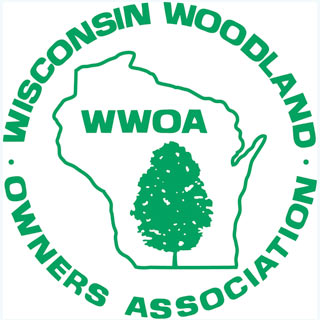The United States Department of Agriculture’s (USDA) Natural Resource Conservation Service (NRCS) works with landowners and farmers through their Conservation Stewardship Program (CSP) to help them plan and implement conservation practices and enhancements that address natural resource concerns on their property. The program covers an array of focuses from livestock, dairy, and crops to forestry, wildlife, and soil health.
What does that exactly mean for you and your woodlands? CSP is a great program whether you already have your land enrolled in Managed Forest Law (MFL) or if you do not. The NRCS has an acre goal, so there is only an 1 acre minimum to be enrolled in the program. The benefit of having a MFL plan or current management plan is you will receive enhancement options that are best suited to your conditions. To determine which enchantments you are eligible for as a landowner, NRCS field staff use an eligibility worksheet called a CAET. With a MFL plan or current management plan, you worked with a professional forester to determine the current conditions of your woodlands. That is the information that will be used in the CAET. Without a plan (which is completely okay!) NRCS field staff fill out the CAET and may make assumptions that may or may not be true. For example, NRCS staff might say that the stocking is adequate when reality is it is overstocked (NRCS will not do an inventory), so incorrect enhancements may be offered.
Some of the forestry enhancements offered include the following (For a full enhancements list click here or to filter enhancements to your specifications click here):
Water Quality Degradation
- Increase riparian forest buffer width for nutrient reduction
- Increase stream shading for stream temperature reduction
- Manage livestock access to streams, ditches, and other waterbodies to reduce nutrients in surface water
- Enhance development of the forest understory to capture nutrients and limit their movement into ground water
Insufficient Water
- Enhance development of the forest understory to improve site moisture
Fish & Wildlife – Inadequate Habitat
- Increase riparian forest buffer width to enhance wildlife habitat
- Stream habitat improvement through placement of woody biomass
- Create patch openings to enhance wildlife food sources and availability and wildlife cover and shelter
- Snags, den trees, and coarse woody debris for wildlife habitat
- Conservation cover to provide food habitat for pollinators and beneficial insects
- Short-interval burn
- Steam crossing elimination
Air Quality Impacts
- Increase on-site carbon storage
- Planting for high carbon sequestration rate
Soil Erosion
- Stream corridor bank stability
Soil Quality Degradation
- Maintaining and improving forest soil quality by limiting compaction
Degraded Plant Condition
- Crop tree management for mast production
- Forest stand improvement to rehabilitate degraded hardwood stands
- Creating structural diversity with patch openings
- Reduce forest density and manage understory along roads to limit wildfire risk
- Herbaceous weed control that helps create desired plant communities and habitats consistent with ecological site
- Establishing tree/shrub species to restore native plant communities
CSP is a 5 year program with a minimum payment of $1,500 and a maximum payment of $40,000. The higher the level of conservation already implemented on your land and the more new practices you are willing to do to increase your level of conservation, the higher the payment available to you will be.
Applications to the program are accepted on a continuous basis. However, applications need to be received by March 2, 2018 to be considered for this funding period.
The best way to find out if you are eligible for this program is to contact your local field office. You can find your local office by clicking here.
Other information provided on this topic include a Non-Industrial Private Forestry fact sheet, an informational sheet about the Conservation Stewardship Program for Forestland Managers, and a personal account from a landowner from Vilas County and their experience using the CSP program.
